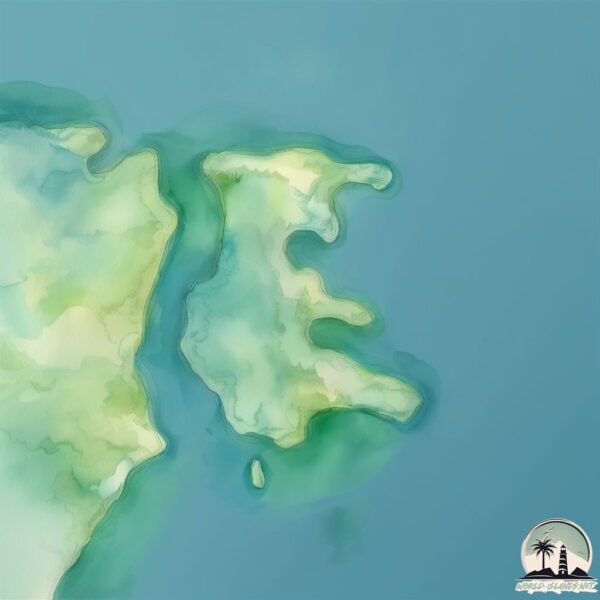Welcome to Pourewa , a Temperate island in the South Pacific Ocean, part of the majestic Pacific Ocean. This guide offers a comprehensive overview of what makes Pourewa unique – from its geography and climate to its population, infrastructure, and beyond. Dive into the details:
Geography and size of Pourewa
Size: 0.504 km²Coastline: 5.6 kmOcean: Pacific OceanSea: South Pacific OceanContinent: Oceania
Pourewa is a Tiny Island spanning 0.504 km² with a coastline of 5.6 km.
Archipel: Polynesia – A region of more than 1,000 islands in the central and southern Pacific Ocean, known for their diverse Polynesian cultures, stunning landscapes, and marine biodiversity.
Tectonic Plate: Kermadec – A small oceanic plate in the south Pacific, east of the Kermadec Trench. It’s part of the active boundary between the Pacific and Indo-Australian plates, known for deep ocean trenches and volcanic island arcs.
The geographic heart of the island is pinpointed at these coordinates:
Climate and weather of Pourewa
Climate Zone: TemperateClimate Details: Temperate Oceanic ClimateTemperature: Warm Summer
Climate Characteristics: Known for its moderate year-round temperatures with ample rainfall and no dry season. Warm summers are characteristic.
Topography and nature of Pourewa
Timezone: UTC+12:00Timezone places: Pacific/AucklandMax. Elevation: 13 m Mean Elevation: 13 mVegetation: Evergreen Broadleaf ForestTree Coverage: 43%
The mean elevation is 13 m. The highest elevation on the island reaches approximately 13 meters above sea level. The island is characterized by Plains: Flat, low-lying lands characterized by a maximum elevation of up to 200 meters. On islands, plains are typically coastal lowlands or central flat areas.
Dominating Vegetation: Evergreen Broadleaf Forest
Vegetation: 1 vegetation zones – Minimal Diversity Island
Infrastructure and Travelling to Pourewa
Does the island have a public airport? no .
Does the island have a major port? no .
The mean population of Pourewa is 1 per km². Pourewa is Uninhabited. The island belongs to New Zealand .
Continuing your journey, Mayor is the next notable island, situated merely km away.
pourewa island
guiding.courageous.learners #tereo #maori #kapaigroup.
pourewa island
guiding.courageous.learners #tereo #maori #kapaigroup.
guiding.courageous.learners #tereo #maori #kapaigroup.
Pourewa Valley Community Open Day
This open day was organised by Nga Kaitiaki Hapori o Pourewa – The ...
This open day was organised by Nga Kaitiaki Hapori o Pourewa – The Community Guardians of Pourewa and kindly hosted by ...
New Zealand is classified as Developed region: G7: Group of Seven – Major advanced economies, including Canada, France, Germany, Italy, Japan, the United Kingdom, and the United States. The level of income is High income: OECD.
News – Latest Updates and Headlines from Pourewa
Stay informed with the most recent news and important headlines from Pourewa. Here’s a roundup of the latest developments.
Loading...
Please note: The data used here has been primarily extracted from satellite readings. Deviations from exact values may occur, particularly regarding the height of elevations and population density. Land area and coastline measurements refer to average values at mean high tide.

